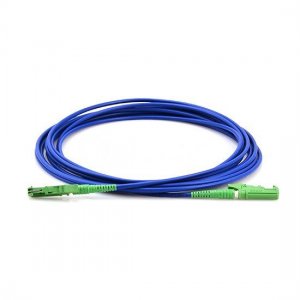
# Fiber Patch Cable: Essential Connectivity Solution for High-Speed Networks
## Introduction to Fiber Patch Cables
Fiber patch cables, also known as fiber jumper cables or fiber optic patch cords, are essential components in modern high-speed network infrastructures. These cables serve as the critical link between network devices, enabling seamless data transmission across various networking environments.
## Key Features of Fiber Patch Cables
Fiber patch cables offer several advantages that make them indispensable in today’s digital landscape:
– High bandwidth capacity
– Low signal attenuation
– Immunity to electromagnetic interference
– Lightweight and flexible design
– Secure data transmission
## Types of Fiber Patch Cables
### Single-mode vs. Multimode
Fiber patch cables come in two primary variants:
Single-mode fiber patch cables feature a smaller core diameter (typically 8-10 microns) and are designed for long-distance transmission with minimal signal loss. They’re ideal for telecommunications and cable TV networks.
Multimode fiber patch cables have a larger core diameter (50 or 62.5 microns) and are better suited for shorter distances within data centers or local area networks (LANs).
### Connector Types
Common connector types for fiber patch cables include:
– LC (Lucent Connector)
– SC (Subscriber Connector)
– ST (Straight Tip)
– MTP/MPO (Multi-fiber Termination Push-on/Pull-off)
## Applications of Fiber Patch Cables
Fiber patch cables find applications in various industries and settings:
– Data centers and server rooms
– Telecommunications networks
– Medical imaging systems
– Military and aerospace communications
– Industrial automation systems
## Choosing the Right Fiber Patch Cable
When selecting a fiber patch cable, consider these factors:
Keyword: Fiber Patch Cable
– Required transmission distance
– Bandwidth needs
– Environment (indoor/outdoor)
– Connector compatibility
– Cable length
– Bend radius requirements
## Maintenance and Handling Tips
Proper care extends the lifespan of fiber patch cables:
– Always use protective caps when not in use
– Avoid excessive bending (follow minimum bend radius guidelines)
– Keep connectors clean using appropriate tools
– Store cables properly when not in use
– Regularly inspect for physical damage
## Future of Fiber Patch Cables
As network speeds continue to increase with technologies like 5G and 400G Ethernet, fiber patch cables will remain crucial for maintaining high-performance connectivity. Advancements in fiber optic technology promise even greater bandwidth capacities and more durable cable designs in the coming years.
Fiber patch cables represent the backbone of modern high-speed networks, offering reliability, performance, and scalability for businesses and organizations worldwide. By understanding their features, types, and proper usage, network administrators can ensure optimal performance of their critical infrastructure.